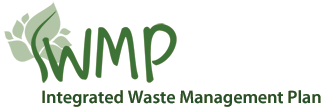2.2.6 Status of waste collection services
(Number of persons not receiving a waste collection service)
A list containing areas that receive a waste collection service and areas that do not receive waste services should be developed. For indigent households, municipalities are required to register indigent households on an indigent register and should ensure that it is kept up to date. The National Domestic Waste Collection Standards can be used as a guideline on the acceptable collection standards for the different settlement types. Further a municipality needs to develop a plan on how it will roll out waste collection services in the different settlement types. For example, different methods could be employed to deliver the service such as making use of the community based collection model in areas that are densely populated using local labour and so forth. A municipality also needs to develop an inventory of its own resources being it financial, infrastructure and human resources in order to highlight how it will deal with providing the service to indigent households and if new establishments are constructed, how it will deal and cope with such expansion.
Table 12: Status of waste collection services per settlement type
| Settlement type | Total households | Total no. of serviced households | Total no. of unserviced households | Total indigent households (taken from total households) | Total unserviced indigents households (taken from total unserviced households) |
|---|---|---|---|---|---|
| High income, low density | 1000 | 1000 | 0 | 0 | 0 |
| Middle income, middle density | 100 000 | 60 000 | 40 000 | 10 000 | 5000 |
| Low income, high density (including Informal settlement) | 200 000 | 100 000 | 100 000 | 40 000 | 40 000 |
| Rural settlements | 300 000 | 50 000 | 250 000 | 170 000 | 170 000 |
The delivery of waste collection services to indigent households as well as rolling out services to previously un-serviced areas could be listed as one of the strategic goals of a municipality. Attaining this target could be achieved through listing the goals and targets in the implementation plan to ensure that it will be prioritised.
(i) Collection needs
It is crucial to establish the extent of collection services provided by the municipality as well as the collection routes in a geographical area or in municipal demarcated collection regions. This can be achieved through mapping the collection routes/areas in order to ascertain the proximity of waste collection routes to the waste disposal sites in order to ensure efficiency and fast turnaround times.
Box 3: Mapping the geographic waste management area
|
Tip on mapping the geographic waste management area A map depicting collection and transportation routes, recycling depots and the location of the disposal facilities or sites should be developed. This information will indicate where there is a need to establish transfer stations and in order to optimise the sites for recycling, and disposal facilities. This map could be a conventional drawing or can be generated by geographic information system (GIS) software and/or generated using a recent Google earth map. If a municipality does not have the GIS system or internet connectivity to download a Google map, it should consult its Town and regional planning division as this unit keeps copies of municipal maps. |
Box 4: Information on the status of waste collection services
Sources of information for waste collection data:
|
By establishing collection routes, a municipality would be able to properly plan for collection and disposal of waste to and from households to the waste disposal facility/ies, at the same time this information could also be used to gauge whether there is a need to develop transfer stations especially where there are vast travel differences between the collection points and the disposal points in order to save on time and financial resources.
Main menu - nice menus
Table of contents
- Executive Summary
- List of figures
- List of boxes
- List of tables
- List of graphs
- List of acronyms
- 1. Introduction
- 2. Contents of the IWMP's
- 2.1 Defining the geographical area
- 2.2 Situation analysis
- 2.2.1 Demographics (population and development profiles)
- 2.2.2 Waste quantities and types
- 2.2.3 Determining current domestic waste generation per capita
- 2.2.4 Estimating future waste generation rates and quantities
- 2.2.5 Waste recycling, treatment and disposal
- 2.2.6 Status of waste collection services
- 2.2.7 Financing of waste management
- 2.3 Desired end state
- 2.4 Identify, evaluate and select alternatives
- 3. Communication and stakeholder participation
- 4. Implementation instruments
- 5. Approval process
- 6. Reporting on implementation, monitoring and review
- 7. References

